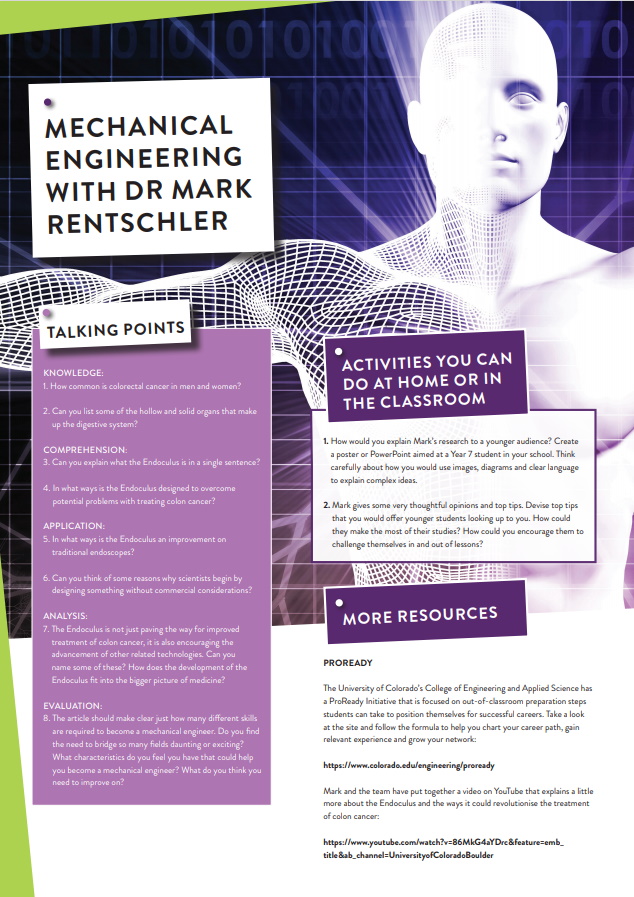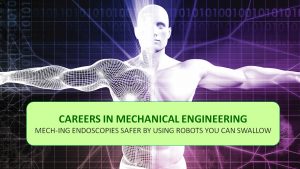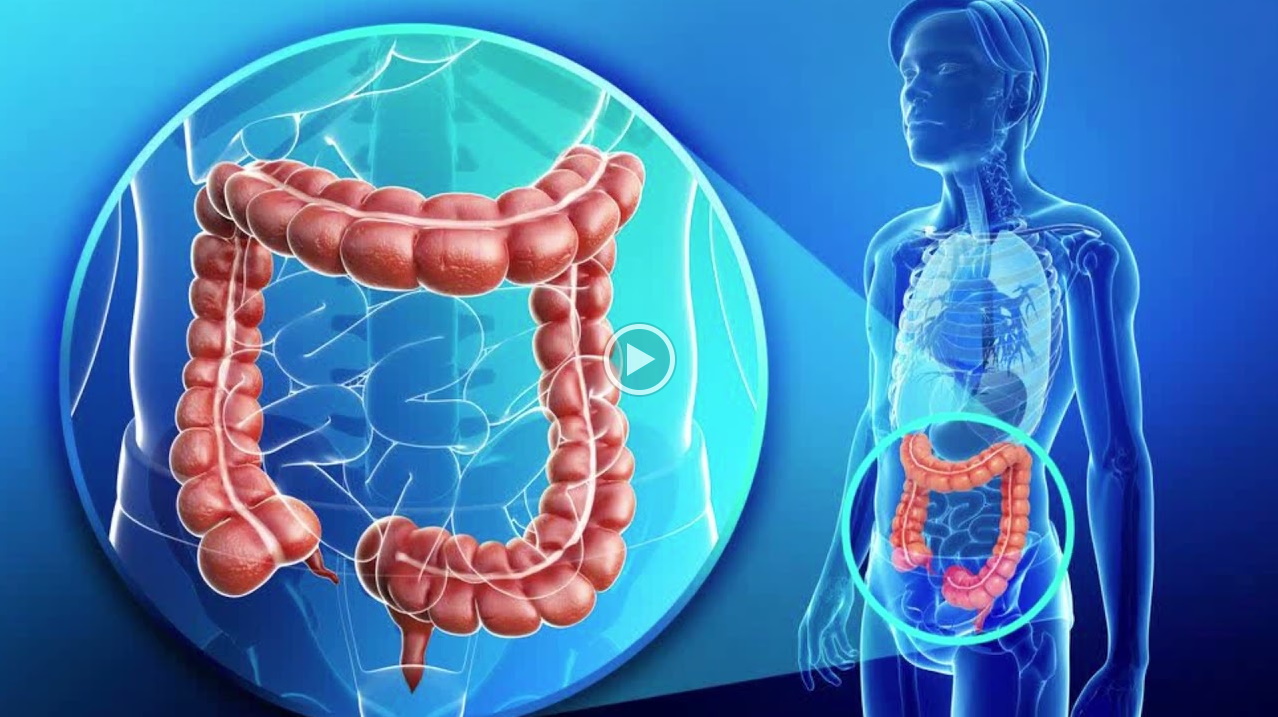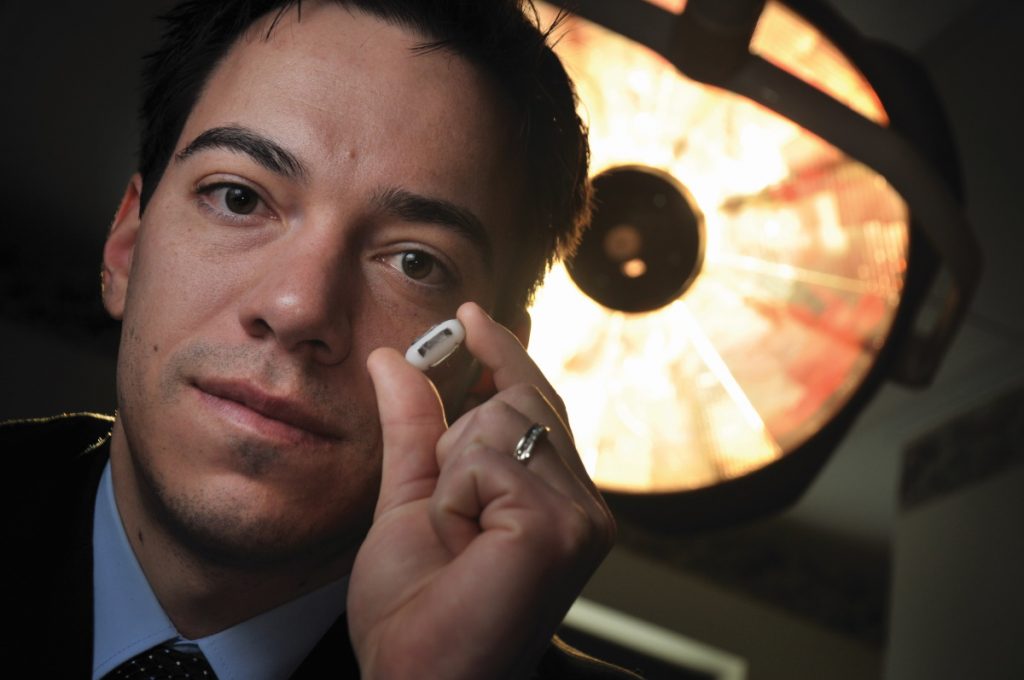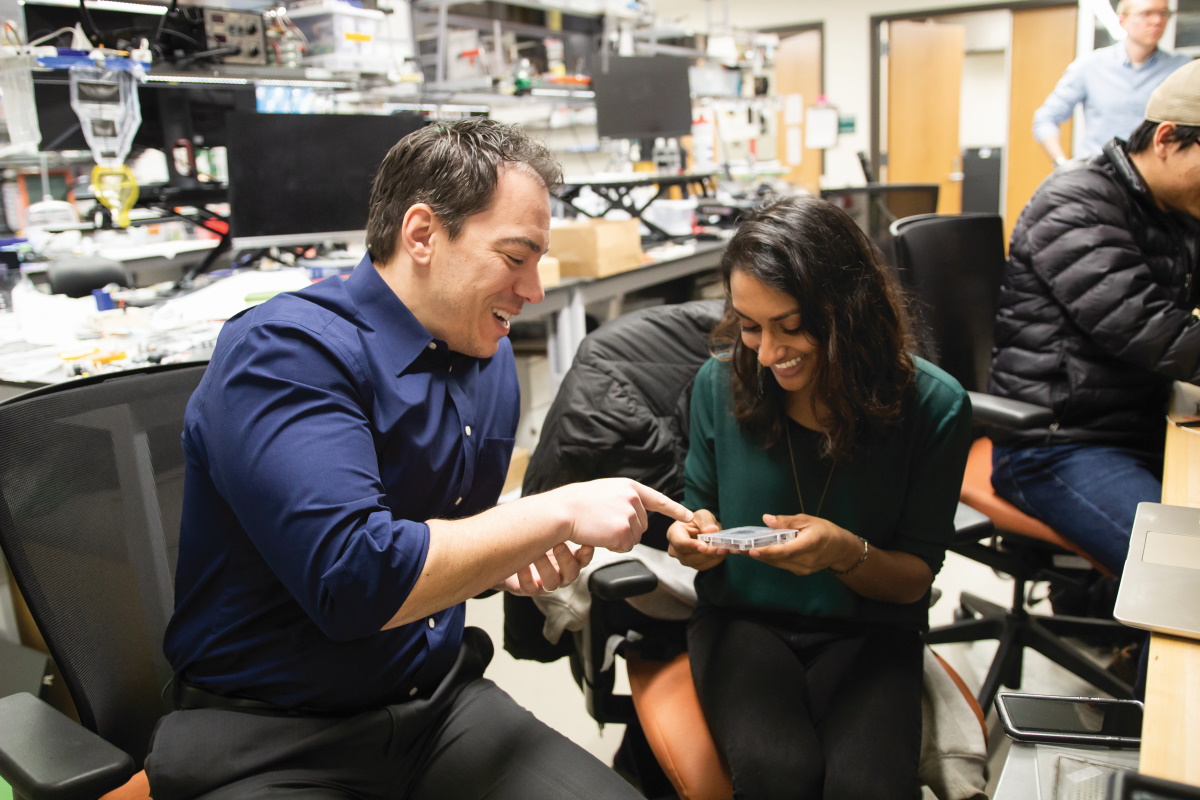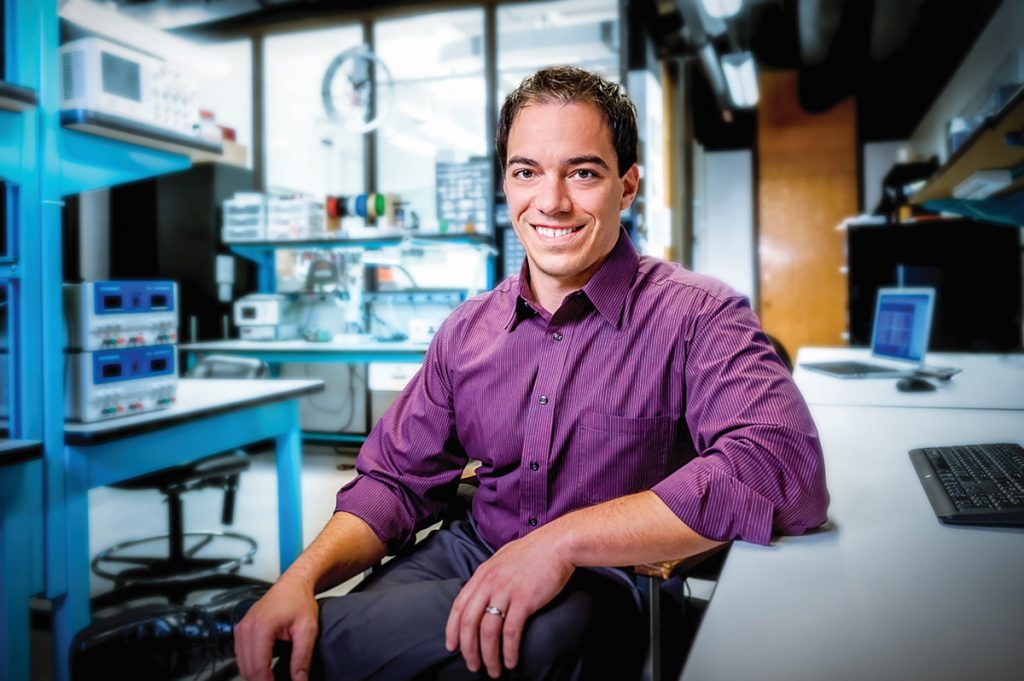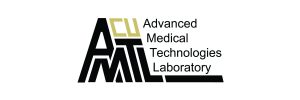Mech-ing endoscopies safer by using robots you can swallow
Dr Mark Rentschler, based at the University of Colorado Boulder in the US, leads a team focused on developing mobile robotic capsule endoscopes. These robots could improve procedures for patients and save lives
The digestive system is a long, twisting tube that runs from the mouth to the anus. It is composed of a range of hollow organs, such as the stomach, small intestine and large intestine, and solid organs, such as the liver, pancreas and gallbladder. There are three main functions of this system – transporting, digesting and absorbing food – and any problems with either of these can be fatal.
Indeed, one of the most prominent diseases of the digestive system is colorectal cancer, which is the third most commonly occurring cancer in men and the second most commonly occurring cancer in women. Given that incidence of this terrible disease is on the rise, researchers have turned their attention to developing ways of improving treatments which could benefit both the patient and the physicians treating it.
Dr Mark Rentschler, based within the Advanced Medical Technologies Laboratory, College of Engineering and Applied Science at the University of Colorado Boulder in the US, leads a team that has a vision to create capsule robots that patients can swallow. The ultimate aim is that surgical procedures can one day be performed autonomously on patients in the comfort of their own home.
WHAT HAS MARK’S TEAM BEEN WORKING ON?
Over the past ten years, Mark and the team have been developing the Endoculus, which is a robotic capsule endoscope that gastroenterologists can use to target the colon and the small bowel. Part of the problem with treating colon cancer is the environment of the gastrointestinal tract (GI). “Imagine driving a car inside a cave – you have no lights, no roadside signs and no GPS. Imagine that there is no pavement and that the ground is soft and moving and that there are puddles the size of your car throughout the cave. Imagine further that the walls are moving and can squeeze against your car,” says Mark. “This is the gastrointestinal environment that the Endoculus must navigate!”
The Endoculus includes a vision camera, sensors to measure motor and robot position, an inertial measurement unit, current sensor to measure the current being sent to the robot, and a magnetic tracking sensor to track the position of the robot in three dimensions. The robot also has onboard lighting and a working channel for external tool access.
WHAT DESIGN FEATURES AFFECT THE MOVEMENT OF THE ENDOCULUS?
Of course, designing a robot that can move inside the body without damaging tissue is a significant challenge. To overcome this, the team has pioneered an approach that uses micro-patterned materials to penetrate through the mucus lining and grip the tissue without damaging it. The Endoculus is curved so it can move along the GI tract with little resistance and is designed to be wider than it is tall, making the platform more stable and improving visualisation from the camera. Because the robot is symmetric, if it flips over it can still function properly, and the camera image flips automatically so that the view remains the same throughout the procedure.
HOW IS THE ENDOCULUS SAFER THAN TRADITIONAL ENDOSCOPES?
Conventional endoscopes advance through the GI tract by being pushed forward by a physician, but this is problematic because it is similar to pushing a rope at the same time as trying to steer it. “In an endoscopy, the endoscope slides against the GI tract and in some cases only changes course after the tract wall pushes back,” explains Mark. “The Endoculus is designed to actively ‘pull’ itself forward which prevents any of the buckling or looping that can occur with a traditional endoscope.” Ultimately, the Endoculus is designed to prevent the discomfort and pain associated with a push endoscopy.
WHAT STAGE IS THE PROJECT AT NOW?
The team is currently working on commercialising the project so that it might one day be used in hospitals. The design still needs some refining in order to ensure it is cost effective. To move forward with the research requires a level of business acumen that is not always considered when the focus is on the scientific feasibility of a product. Fortunately, the team has experience making the transition from bench to bedside with other projects, so they are well versed in what is required to make the Endoculus a reality in the future.
WHEN WILL THE TECHNOLOGY BE USED IN HOSPITALS?
Mark and the team expect the Endoculus (or variations of it) to be used in hospitals within five years. “Medicine is moving towards automation and ‘smart health’ on a number of fronts. Ultimately, data-driven approaches treat the patient,” explains Mark. “A portion of this is patient-specific medicine and a portion of this is the incorporation of machine learning and early artificial intelligence to help guide physicians.” Such approaches help highlight potential treatment options that might otherwise be overlooked by a medical team and so, while the Endoculus might take a while to reach the bedside, the principles behind it – automation and image-guided diagnosis – will arrive much sooner.
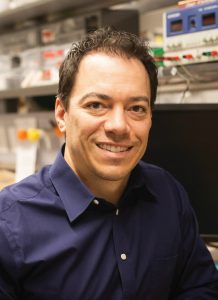 DR MARK RENTSCHLER
DR MARK RENTSCHLER
Advanced Medical Technologies Laboratory
College of Engineering and Applied Science
University of Colorado
Boulder, USA.
FIELD OF RESEARCH: Mechanical Engineering
RESEARCH PROJECT: Mark’s team is developing mobile robotic capsule endoscopes to explore the digestive system. The robots could improve procedures for patients.
FUNDERS: National Science Foundation, National Institutes of Health, Conmed Electrosurgery, Medtronic, Children’s Hospital Colorado, and Colorado Office of Economic Development and International Trade
ABOUT MECHANICAL ENGINEERING
As the name suggests, mechanical engineering is a branch of engineering that is primarily concerned with analysing, designing and manufacturing mechanical systems. It combines physics, engineering, mathematics and materials science, and uses the principles of motion, energy and force. Mechanical engineering has a long history (it is one of the oldest branches of engineering), with the invention of the steam engine during the Industrial Revolution highlighting the significance of developing machinery.
WHAT IS REWARDING AND CHALLENGING ABOUT MECHANICAL ENGINEERING?
Mark says that he agrees with the notion that mechanical engineers seek to master the forces that drive our world. “I see mechanical engineering as an incredible challenge and an incredible opportunity,” says Mark. “To understand and leverage the physics of nature to positively impact society is my career passion. My background in mechanical engineering, tied with my experience in medical devices, allows me to help make a positive impact for patients and physicians – I find this extremely rewarding.”
WHAT TYPES OF COLLABORATION ARE REQUIRED IN THE FIELD?
Mechanical engineering is a highly interdisciplinary field and achieving goals requires a combination of a range of disciplines, such as computer science, electronics, and medicine in Mark’s case. “The multidisciplinary aspect means that myself and those in my group have had to learn to cross disciplines to effectively communicate with such diverse teams. Ten years ago, crossing disciplines in these approaches was an effective research approach. Today, it is an absolute necessity,” explains Mark. “While my background and scientific training will always be in mechanical engineering, I have developed knowledge in electronics, computer science, and a number of aspects of medicine including multiple fields of surgery and gastroenterology.”
If you want to become a successful mechanical engineer, you will undoubtedly have to bridge several scientific fields and expand your skillset continuously.
WHAT ARE THE MAIN ISSUES FACING TODAY’S MECHANICAL ENGINEERS?
As Mark’s research shows, mechanical engineering has found applications within medicine, but it also has relevance to renewables, conservation and technologies across micro and nano scales. “Mechanical engineers have been described as generalists, which is in many ways accurate. However, there is a fundamental aspect that well-trained mechanical engineers have and that is a deep-rooted understanding of the application of physics properties to create novel solutions,” says Mark. “Mechanical engineers are trained to design, build and test mechanical components and systems. The trick to being successful today is to marry that understanding with a dose of electronics knowledge or coding expertise. This allows mechanical engineers to cross boundaries in a way some other disciplines cannot.”
Reference
https://doi.org/10.33424/FUTURUM95
Indeed, one of the most prominent diseases of the digestive system is colorectal cancer, which is the third most commonly occurring cancer in men and the second most commonly occurring cancer in women. Given that incidence of this terrible disease is on the rise, researchers have turned their attention to developing ways of improving treatments which could benefit both the patient and the physicians treating it.
Dr Mark Rentschler, based within the Advanced Medical Technologies Laboratory, College of Engineering and Applied Science at the University of Colorado Boulder in the US, leads a team that has a vision to create capsule robots that patients can swallow. The ultimate aim is that surgical procedures can one day be performed autonomously on patients in the comfort of their own home.
WHAT HAS MARK’S TEAM BEEN WORKING ON?
Over the past ten years, Mark and the team have been developing the Endoculus, which is a robotic capsule endoscope that gastroenterologists can use to target the colon and the small bowel. Part of the problem with treating colon cancer is the environment of the gastrointestinal tract (GI). “Imagine driving a car inside a cave – you have no lights, no roadside signs and no GPS. Imagine that there is no pavement and that the ground is soft and moving and that there are puddles the size of your car throughout the cave. Imagine further that the walls are moving and can squeeze against your car,” says Mark. “This is the gastrointestinal environment that the Endoculus must navigate!”
The Endoculus includes a vision camera, sensors to measure motor and robot position, an inertial measurement unit, current sensor to measure the current being sent to the robot, and a magnetic tracking sensor to track the position of the robot in three dimensions. The robot also has onboard lighting and a working channel for external tool access.
WHAT DESIGN FEATURES AFFECT THE MOVEMENT OF THE ENDOCULUS?
Of course, designing a robot that can move inside the body without damaging tissue is a significant challenge. To overcome this, the team has pioneered an approach that uses micro-patterned materials to penetrate through the mucus lining and grip the tissue without damaging it. The Endoculus is curved so it can move along the GI tract with little resistance and is designed to be wider than it is tall, making the platform more stable and improving visualisation from the camera. Because the robot is symmetric, if it flips over it can still function properly, and the camera image flips automatically so that the view remains the same throughout the procedure.
HOW IS THE ENDOCULUS SAFER THAN TRADITIONAL ENDOSCOPES?
Conventional endoscopes advance through the GI tract by being pushed forward by a physician, but this is problematic because it is similar to pushing a rope at the same time as trying to steer it. “In an endoscopy, the endoscope slides against the GI tract and in some cases only changes course after the tract wall pushes back,” explains Mark. “The Endoculus is designed to actively ‘pull’ itself forward which prevents any of the buckling or looping that can occur with a traditional endoscope.” Ultimately, the Endoculus is designed to prevent the discomfort and pain associated with a push endoscopy.
WHAT STAGE IS THE PROJECT AT NOW?
The team is currently working on commercialising the project so that it might one day be used in hospitals. The design still needs some refining in order to ensure it is cost effective. To move forward with the research requires a level of business acumen that is not always considered when the focus is on the scientific feasibility of a product. Fortunately, the team has experience making the transition from bench to bedside with other projects, so they are well versed in what is required to make the Endoculus a reality in the future.
WHEN WILL THE TECHNOLOGY BE USED IN HOSPITALS?
Mark and the team expect the Endoculus (or variations of it) to be used in hospitals within five years. “Medicine is moving towards automation and ‘smart health’ on a number of fronts. Ultimately, data-driven approaches treat the patient,” explains Mark. “A portion of this is patient-specific medicine and a portion of this is the incorporation of machine learning and early artificial intelligence to help guide physicians.” Such approaches help highlight potential treatment options that might otherwise be overlooked by a medical team and so, while the Endoculus might take a while to reach the bedside, the principles behind it – automation and image-guided diagnosis – will arrive much sooner.
 DR MARK RENTSCHLER
DR MARK RENTSCHLER
Advanced Medical Technologies Laboratory
College of Engineering and Applied Science
University of Colorado
Boulder, USA.
FIELD OF RESEARCH: Mechanical Engineering
RESEARCH PROJECT: Mark’s team is developing mobile robotic capsule endoscopes to explore the digestive system. The robots could improve procedures for patients.
FUNDERS: National Science Foundation, National Institutes of Health, Conmed Electrosurgery, Medtronic, Children’s Hospital Colorado, and Colorado Office of Economic Development and International Trade
ABOUT MECHANICAL ENGINEERING
As the name suggests, mechanical engineering is a branch of engineering that is primarily concerned with analysing, designing and manufacturing mechanical systems. It combines physics, engineering, mathematics and materials science, and uses the principles of motion, energy and force. Mechanical engineering has a long history (it is one of the oldest branches of engineering), with the invention of the steam engine during the Industrial Revolution highlighting the significance of developing machinery.
WHAT IS REWARDING AND CHALLENGING ABOUT MECHANICAL ENGINEERING?
Mark says that he agrees with the notion that mechanical engineers seek to master the forces that drive our world. “I see mechanical engineering as an incredible challenge and an incredible opportunity,” says Mark. “To understand and leverage the physics of nature to positively impact society is my career passion. My background in mechanical engineering, tied with my experience in medical devices, allows me to help make a positive impact for patients and physicians – I find this extremely rewarding.”
WHAT TYPES OF COLLABORATION ARE REQUIRED IN THE FIELD?
Mechanical engineering is a highly interdisciplinary field and achieving goals requires a combination of a range of disciplines, such as computer science, electronics, and medicine in Mark’s case. “The multidisciplinary aspect means that myself and those in my group have had to learn to cross disciplines to effectively communicate with such diverse teams. Ten years ago, crossing disciplines in these approaches was an effective research approach. Today, it is an absolute necessity,” explains Mark. “While my background and scientific training will always be in mechanical engineering, I have developed knowledge in electronics, computer science, and a number of aspects of medicine including multiple fields of surgery and gastroenterology.”
If you want to become a successful mechanical engineer, you will undoubtedly have to bridge several scientific fields and expand your skillset continuously.
WHAT ARE THE MAIN ISSUES FACING TODAY’S MECHANICAL ENGINEERS?
As Mark’s research shows, mechanical engineering has found applications within medicine, but it also has relevance to renewables, conservation and technologies across micro and nano scales. “Mechanical engineers have been described as generalists, which is in many ways accurate. However, there is a fundamental aspect that well-trained mechanical engineers have and that is a deep-rooted understanding of the application of physics properties to create novel solutions,” says Mark. “Mechanical engineers are trained to design, build and test mechanical components and systems. The trick to being successful today is to marry that understanding with a dose of electronics knowledge or coding expertise. This allows mechanical engineers to cross boundaries in a way some other disciplines cannot.”
HOW DID MARK BECOME A MECHANICAL ENGINEER?
WHAT WERE YOUR INTERESTS GROWING UP?
As a child I was always on the move. I loved art and building things with my hands, and enjoyed taking apart electromechanical devices such as VCRs, cassette players, Walkman’s, etc. I also loved building forts! I grew up on a farm and was constantly rummaging through old equipment components, bolts and gears. When I wasn’t outside building things, I was inside working with LEGO to design, build and test new creations. I loved playing games with my siblings, riding my bike, and trying to design a garden that I didn’t need to bend over to pull the weeds from. Every morning, I woke up with a desire to learn and build something new.
WHO OR WHAT HAS INSPIRED YOU IN YOUR CAREER?
As a child, I loved art and drawing but as I got older, I became interested in architecture and designing buildings. Ultimately, in high school I took courses in computer science and physics and began to learn about the field of engineering. I was also very much inspired by the notion of building a robot as a child. As I grew up, I began to put the pieces of the puzzle together to be able to design robotic devices and structures. For me, there wasn’t a specific event or person that set me on this course. Instead, I tried a lot of different career paths through internships and research experiences that showed me what I liked and what I didn’t. I got to where I am today by choosing opportunities that stretched me more than anything else.
WHAT ATTRIBUTES HAVE MADE YOU A SUCCESSFUL ENGINEER?
Failing. Early in your career you’re likely to make mistakes and fail – a lot. This is a good thing! I have adopted the mindset that sometimes you win, sometimes you learn. If you’re not failing, how much are you learning? Become comfortable with failing and see it as an opportunity for growth. There are certainly lots of times where detailed and thoughtful analysis is required, but at the end of the day, after the calculations are completed, you have to build it, test it, learn from it, and start again. One of the questions I ask students interviewing for a position in my lab is, “What is the last thing that you built?” I also ask, “When was the last time you failed?” Those that can answer these questions are those that I want to invest in. So, my willingness to try, fail, and try again have been central to my success.
HOW DO YOU OVERCOME OBSTACLES IN YOUR WORK?
I am someone that is goal-oriented and entirely focused on what success looks like. One’s definition of success in a project, career, and life will fundamentally shift the approach one takes to achieving that goal. In my work, if we’re not able to achieve the goal we set for ourselves in the given timeframe, we need to pause and re-evaluate the goal and approach. Is the goal physically possible? If so, why did we fail? Did we pick the wrong path? Do we need additional members on the team? Did things not unfold as anticipated due to outside factors? Is there too much uncertainty between where we are today and the ultimate goal that we need to divide the long-term goal into smaller, more attainable, short-term buckets? In the end, life will always happen. The only thing you can truly control is how you react to change and circumstances. Things will never go as planned. A key to success is knowing this, understanding this, and embracing this uncertainty. You roll with the punches while keeping your eyes on the goal.
HOW DO YOU SWITCH OFF FROM THE COMPLEXITIES OF YOUR WORK?
When I’m not at work I enjoy spending my time with my wife and kids. I also enjoy working out and staying in shape while I listen to podcasts on a range of topics from business, sports, leadership, marketing, and politics. There are many lessons to be learned from a variety of different points of view that are translatable to my responsibility as a parent and a spouse to those responsibilities I have in my day-to-day job. These various sources of ‘down time’ allow me to recharge away from the office.
HOW TO BECOME A MECHANICAL ENGINEER
• The Institution of Mechanical Engineers is attempting to improve the world through engineering. The website is incredibly detailed and includes lots of information, including how to get involved in the field and career considerations: https://www.imeche.org/
• The American Society of Mechanical Engineers promotes the art, science and practice of multidisciplinary engineering and allied sciences around the globe: https://www.asme.org/
• Entry level mechanical engineers can earn anywhere between $55,000 to $75,000 depending on their level of experience.
PATHWAY FROM SCHOOL TO MECHANICAL ENGINEERING
Mark believes that to be successful in mechanical engineering, a fundamental understanding of physics is essential, with mathematical concepts a close second. He is also a passionate advocate for creativity. “I recommend you develop your creative side in any medium that speaks to you, whether that is music, art, sculpture, dance, or doing something creative with your hands,” says Mark. “Everything in our world has been built from a design created by an engineer. Understanding how to build things is a skill that can be honed in your free time through hands-on activities.”
2 or 3 A levels, or equivalent, including maths and physics.
You could do a degree in mechanical engineering, electromechanical engineering, mechatronics or engineering manufacturing, depending on the specific area you want to focus on. Some courses include a year working in industry.
https://nationalcareers.service.gov.uk/job-profiles/mechanical-engineer
MARK’S TOP TIPS
1 – Choose your journey, not your destination. Life is composed of the chaos of the journey which is what makes it worth living. Embrace the chaos!
2 – Bet on yourself. The easiest thing to do is listen to the noise around you that may be telling you that you can’t do it. You can do it. Sooner or later in life, people almost always realise they should be betting on themselves. Unfortunately, this understanding can come too late for some.
3 – You will move in the direction of the people that you associate with, so it’s important to associate with people that are better than yourself. The friends you have will form you as you go through life. Make some good friends, keep them for the rest of your life, but make sure they are people you admire as well as like.
Do you have a question for Mark?
Write it in the comments box below and Mark will get back to you. (Remember, researchers are very busy people, so you may have to wait a few days.)


